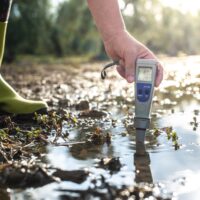Stricter NJDEP Protections for Rivers and Streams

While the New Jersey Department of Environmental Protection (NJDEP) has relaxed some deadlines for pollution response in light of the COVID-19 coronavirus pandemic and its attendant effects on businesses and the economy, the NJDEP is nevertheless hard at work strengthening environmental protections and pursuing enforcement actions. The NJDEP recently passed a set of amendments to the Surface Water Quality Standards, changing the definitions of hundreds of miles of waterways across the state in order to enforce more strict standards. Read on for an explanation of the rule amendments, and call a licensed underground storage tank (UST) remediation and removal professional if you need assistance with a damaged or contaminated UST.
NJDEP Upgrades 600 Miles of Waters to Higher Level of Pollution Protection
Effective April 6, 2020, NJDEP adopted amendments to the Surface Water Quality Standards, N.J.A.C. 7:9B. Pursuant to the amended rules, 600 miles of New Jersey rivers and streams were upgraded to Category One (C1) status. This move represents the first C1 waterway upgrade since 2008 when New Jersey designated 638 miles of rivers and streams as C1.
According to the government, 547 miles of the waterways are being upgraded as a result of their “exceptional ecological value,” while 53 of the miles are being afforded upgraded protection because of their “exceptional fisheries resources.” The government identified 67 municipalities and 14 counties that are potentially affected by the upgraded protections, including the Ramapo River in Bergen County, the Pequest River in Warren County, and Jacobs Creek in Mercer county, among others.
Category One waterways are the middle level of New Jersey’s three tiers of waterway protection designations. C1 waterways must meet stringent water quality standards and are afforded 300-foot development buffers (riparian buffers) under the New Jersey Flood Hazard Area Control Act. Real estate projects eying any of the lands surrounding these upgraded waterways will now need to contend with the ban on development within the 300-foot range of the waterways, meaning stricter permit limitations. Any existing nearby projects with pollutant concerns, such as underground storage tanks, must take extra care to ensure that any development and remediation efforts comply with the stricter pollution standards. Sewage treatment plants that discharge into these newly-designated C1 waters will need to significantly upgrade their operations to comply with the higher water quality standards.
Let the Professionals at Lutz Handle Your Underground Storage Tank Issues
If you discover a UST at your construction worksite, or if you have to respond to a UST spill on your property, you need experienced help from seasoned advisors with years of underground storage tank experience. For qualified, thorough, and efficient assistance dealing with a UST on your property, call Herbert Lutz & Company, in Florida at 954-971-5222, or in New Jersey at 908-862-8888.
